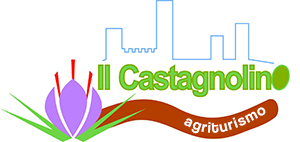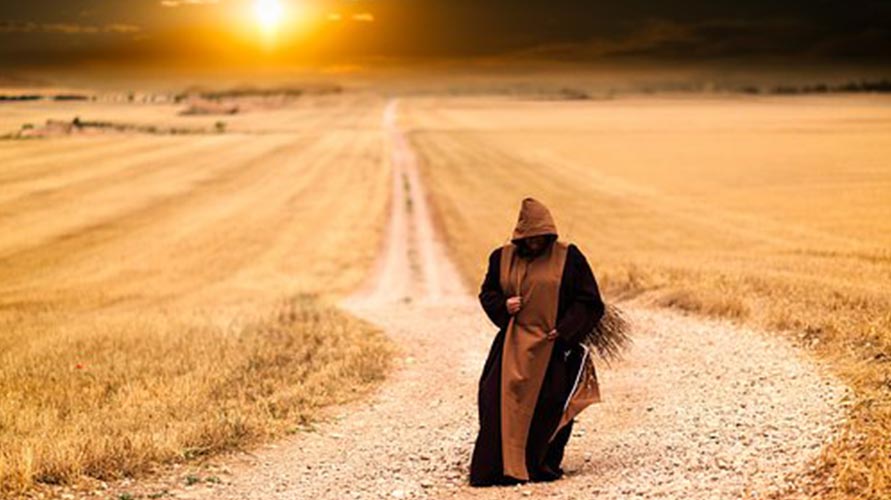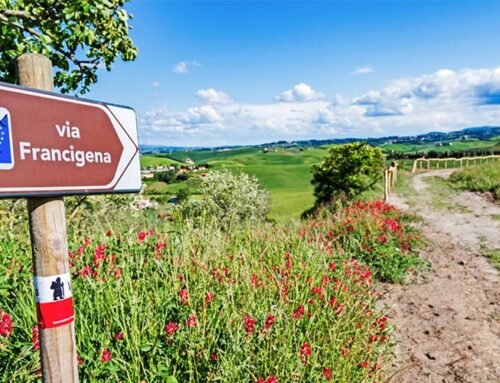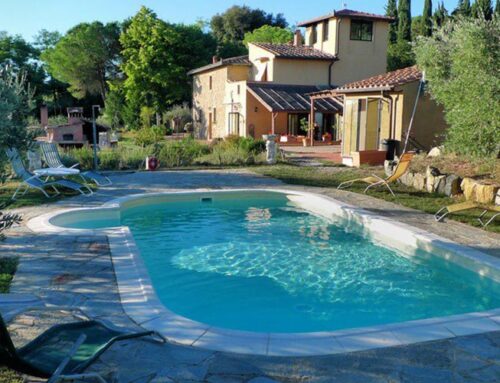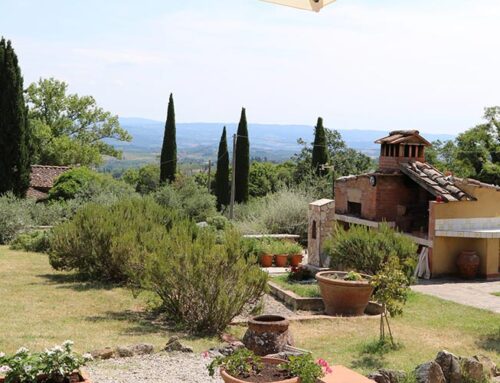Who was the Pilgrim?
The Pilgrim was the one who, for various reasons, took and left for destinations and places considered sacred. The Pilgrimage, in the Middle Ages, was done for worship, for devotion, but also to fulfill a vow, atone for a crime or obtain indulgences or miraculous cures in these special places, from which the Wanderer then used to bring back evidence tangible, such as holy water, small relics or powders of holy places.
The medieval Pilgrim’s dress
The medieval pilgrim, between the 9th and 14th centuries, wore a “uniform” that distinguished him, as we see on various engravings or drawings, together with the symbols he wore on his cloak, depending on the destination of his pilgrimage: the cross or palm , from which they were called palms, if the destination had been Jerusalem, the keys of St. Peter for the Romeos who had gone to Rome and the shell >, for those who had visited the tomb of the apostle James in Santiago de Compostela. The dress was a short tunic above the knee and narrow at the waist with a cloak over it, called a pilgrim, a hood or a round hat with wide brims stopped by a chin strap, the ever-present cane with a curved handle, called a staff and a saddlebag .
The Pilgrim’s menu in Tuscany
Pilgrims subsisted on bread and water as penance and probably also out of necessity. The bread was dark, a mixture of flours of various origins such as soft wheat, rye, barley, broad beans and chestnuts. At night they found shelter in inns and houses and as food they had soups and stews. The most common were paniccia, made with cereals and legumes and macco, a broad bean purée according to Tuscan tradition.
Another soup was the plumentum, a broth enriched with seasonal vegetables, cereals and legumes. Even acquacotta seems to resemble this soup. Wild medicinal herbs used in popular medicine for their healing properties were then added to the broth. But obviously the food varied according to the areas in Tuscany that the pilgrim crossed.
Pilgrims passing through the Via Francigena next to our Agriturismo, they are welcome! Don’t hesitate to book!
Are you a Pilgrim too?
